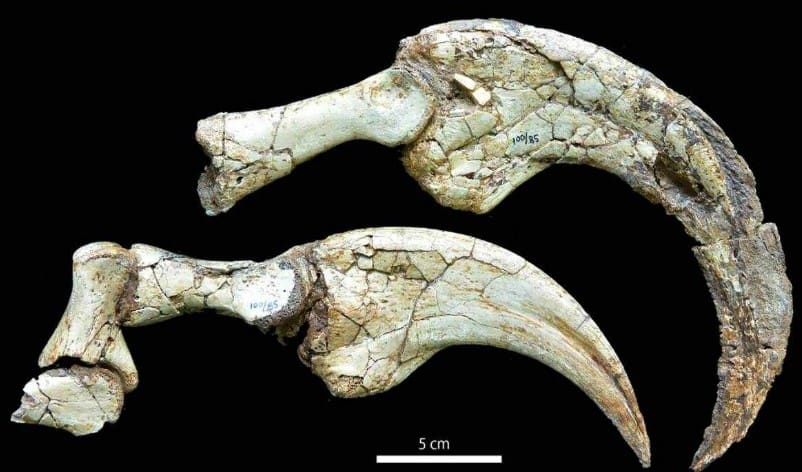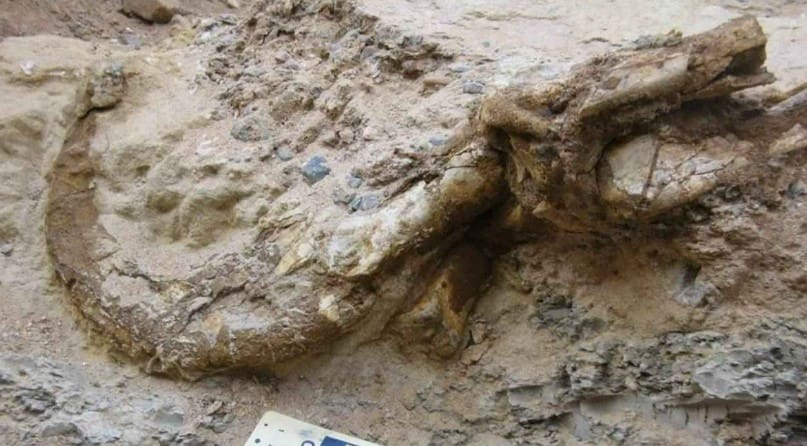An important discovery was made in the evolutionary journey of Terizinosaurs. The newly discovered species managed to surprise scientists.
A new species of therizinosaur dated to about 90 million years ago has stunned scientists. This species, called Duonychus tsogtbaatari, is remarkable for having only two fingers, unlike all known therizinosaurs to date.
The discovery was made in the Bayanshiree Formation in the Gobi Desert of Mongolia. According to the study published in the journal iScience, the find has extremely rare features in terms of preserving the fossilised keratin sheath.
In 2012, a large claw unearthed by workers during pipeline construction was first investigated by the Mongolian Institute of Palaeontology. The fossil belongs to the Lower Upper Cretaceous period, dating from 95.9 to 89.6 million years ago. Discovered in 2013 by Dr Yoshitsugu Kobayashi, the specimen caused great surprise among the research team.
‘As soon as I put it on the table, I realised it was a terizinosaur claw, but then I realised… there were only two fingers. I looked again and again to see where the third finger was. I couldn’t believe my eyes,’ Kobayashi said.
The fact that the outer part of the claw preserved the sheath made of keratin, which forms our fingernails, made the discovery even more striking. Normally, this structure would be expected to decompose before fossilisation and not survive. ‘This was a real claw, as it was when the dinosaur was alive,’ Kobayashi said.
New Terizinosaur species found thanks to an exceptionally well-preserved fossil

Prof. Dr. Darla Zelenitsky from the University of Calgary, who was part of the research team, stated that thanks to the exceptionally good preservation of the fossil, they were able to clearly see the actual size and shape of the claw. ‘This was a large, sharp and impressive claw,’ Zelenitsky said.
Although it only had two fingers, Duonychus tsogtbaatari’s claws were still well-suited for grasping and pulling plants. ‘Many species of therizinosaurs used their claws to pull plants to them during feeding,’ Zelenitsky said. We think that Duonychus was also able to do this effectively. But the uniqueness of the hand structure suggests that this species may have developed a different way of feeding than others,’ Zelenitsky said.
By studying the elbow, wrist and finger joints, the team determined that Duonychus tsogtbaatari used its arms differently from other theropods.
‘The elbow and wrist were incredibly stiff,’ Kobayashi said. This suggests that the animal used its arms in an unusual way. The keratin sheath revealed that this animal fed by pulling down branches,’ Kobayashi said. The limited flexibility of these structures and the missing third finger are not actually disadvantages, but functional adaptations.

Traces from Fossils to Behaviour
Direct clues to the behaviour of extinct animals are rarely found in the fossil record. But such well-preserved remains give scientists the opportunity to reconstruct ways of life from 90 million years ago.
‘This offers a rare glimpse into how these animals used their hands. It is as if we are observing a behaviour from 90 million years ago,’ Kobayashi said.

